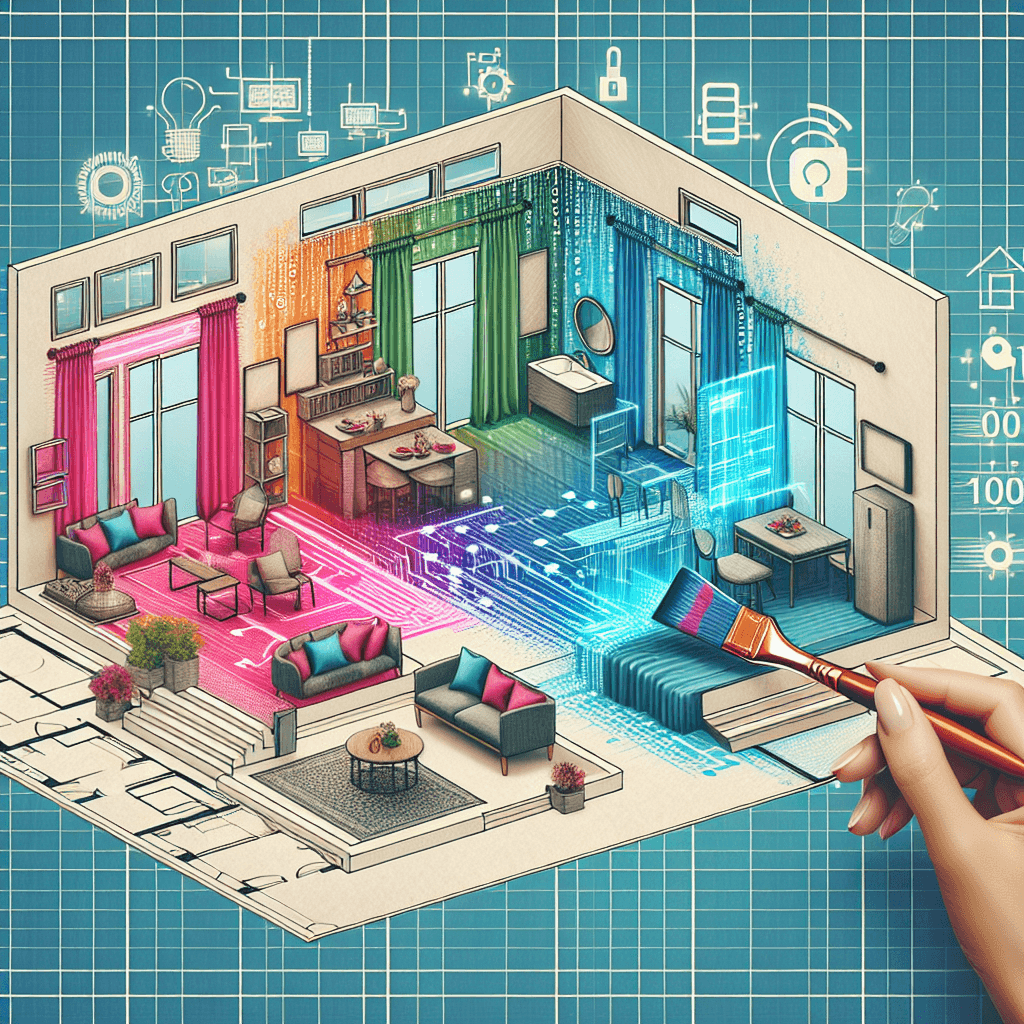In the fast-evolving world of interior design, artificial intelligence (AI) is carving out a niche that merges technology with creativity. As designers and homeowners alike seek innovative ways to visualize spaces, AI image generators are becoming invaluable tools. Below, we delve into the top 10 AI image generators that are redefining how we approach interior design.
1. Understanding AI Image Generators
AI image generators utilize algorithms and vast datasets to create visually stunning renderings of spaces that may not exist yet. They allow users to explore various styles, colors, and atmospheres, making the design process more interactive and imaginative.
Why Choose AI for Interior Design?
Traditional interior design involves extensive manual work and expertise. AI image generators streamline this process, providing quick and often highly customized visualizations, which can lead to more informed decision-making.
2. Top Picks: Unveiling the Leaders in AI Image Generation
2.1 Midjourney
Midjourney stands out as a frontrunner in the realm of AI-generated imagery. Its access to diverse design styles and ability to generate high-quality images makes it a favorite among designers.
Strengths:
- Exceptional rendering quality
- User-friendly interface
- Versatile styles from modern to vintage
2.2 DALL-E 2
DALL-E 2, developed by OpenAI, captures the imagination with its ability to conjure up surrealistic interiors. Users can prompt the AI with specific themes, and the results are consistently impressive.
Strengths:
- Innovative creativity
- Complex prompts yield unique results
- Excellent for inspiration and brainstorming
3. Canva Magic Write
Canva, known for its graphic design capabilities, now incorporates an AI image generator tailored for interior design. Its tools enable users to create mock-ups effortlessly.
Strengths:
- Seamless integration with design tools
- Easy-to-use drag-and-drop features
- Ideal for beginners
3.1 NightCafe Studio
NightCafe Studio leans more towards artistic representations, allowing users to create dreamlike interiors that challenge conventional aesthetics. It’s perfect for those looking to experiment with interior design boundaries.
Strengths:
- Unique style variations
- High level of customization
- Community features to share and gain feedback
4. Artbreeder
Artbreeder allows users to blend various images, creating entirely new concepts. Its functionality is particularly beneficial for interior designers looking to innovate or draw inspiration from multiple styles.
Strengths:
- Collaborative image generation
- Intuitive interface with sliders for adjustments
- Vast database of existing images for reference
4.1 SketchUp with AI Tools
For those familiar with 3D modeling, SketchUp offers various AI-powered tools that enhance the design experience, adding realistic textures and lighting to interior spaces.
Strengths:
- In-depth modeling capabilities
- Versatile plugins and extensions
- Strong community support and resources
5. Designify
Designify automates image enhancement processes that are crucial for showcasing interior designs professionally. It transforms ordinary photos into visually appealing representations.
Strengths:
- Excellent for real estate and promotional uses
- Quick processing times
- Customizable features to fit branding
5.1 DeepArt
DeepArt employs neural networks to transform photographs of interiors into artistic renditions. Designers can apply various art styles, bringing an artistic flair to their projects.
Strengths:
- High-quality artistic transformations
- Excellent for branding in artistic markets
- User-friendly interface
6. Runway ML
This platform not only focuses on images but also extends to video and animations, allowing interior designers to create immersive experiences. Runway ML’s capabilities are essential for those wanting to visualize static designs dynamically.
Strengths:
- Supports multimedia projects
- Robust tools for video editing and effects
- Accessible for non-technical users
6.1 Adobe Firefly
Adobe Firefly integrates AI within the Adobe suite, allowing designers to generate images directly within familiar applications like Photoshop. This smooth integration enhances productivity and creativity.
Strengths:
- Combines existing knowledge with AI innovations
- Excellent for professional design workflows
- Multiple features for brand consistency
7. Ease of Use and Accessibility
One of the significant advantages of these AI image generators is their user-friendly interfaces. Most tools are designed for users of all levels, making them accessible for both seasoned designers and novices.
Learning Curve and Resources
Many platforms offer tutorials, guides, and community forums to aid users in navigating their tools effectively.
8. Inspiration and Trend Setting
AI image generators not only assist in creating visuals but also serve as sources of inspiration. By analyzing trends, these tools highlight what’s currently popular in the interior design world.
Staying Ahead of Trends
Using AI-generated imagery allows designers to remain at the forefront of trends, helping them create spaces that resonate with contemporary preferences.
9. Customization and Personalization
The ability to customize images easily makes these generators appealing. Different styles, color palettes, and lighting options allow users to create bespoke designs that reflect individual tastes.
Tailoring Designs to Specific Needs
Designers can cater to clients’ preferences through personalized renderings, ensuring that their visions are adequately captured.
10. The Future of Interior Design with AI
As AI technology continues to evolve, the impact on interior design will be profound. Future developments may lead to even more advanced features, such as real-time collaboration and deeper integration with virtual reality environments.
Predictions for Evolution
Experts anticipate a shift towards more interactive design experiences where clients can visualize changes in real-time, making the design process even more engaging.
Conclusion: Embracing Innovation in Interior Design
In conclusion, AI image generators are transforming how we visualize and create interior spaces. From quick mock-ups to artistically inspired renditions, these tools not only make the design process more efficient but also foster creativity. As designers adopt these technologies, they can expect to create spaces that are not only aesthetically pleasing but also resonate with their clients’ aspirations. Embracing these innovations is essential for anyone looking to thrive in the dynamic world of interior design.








